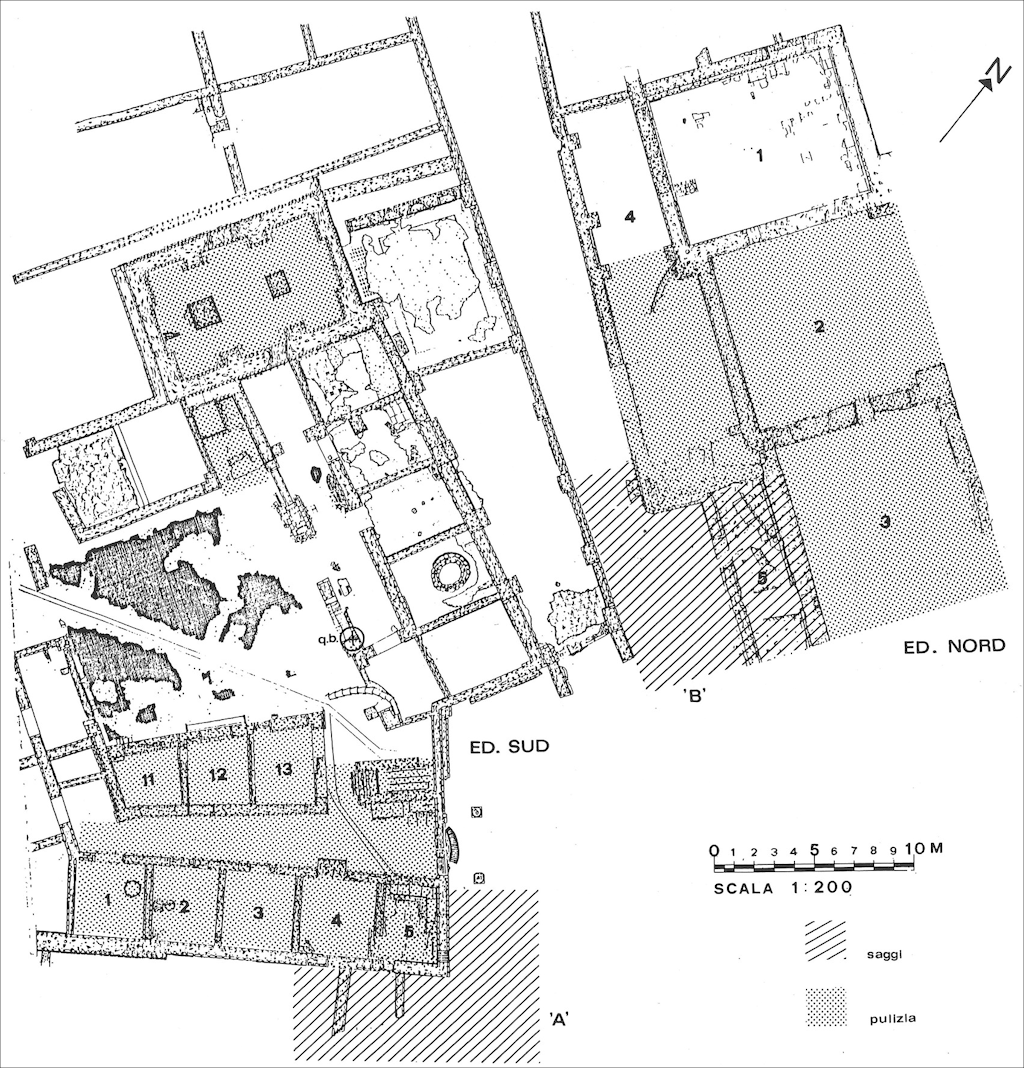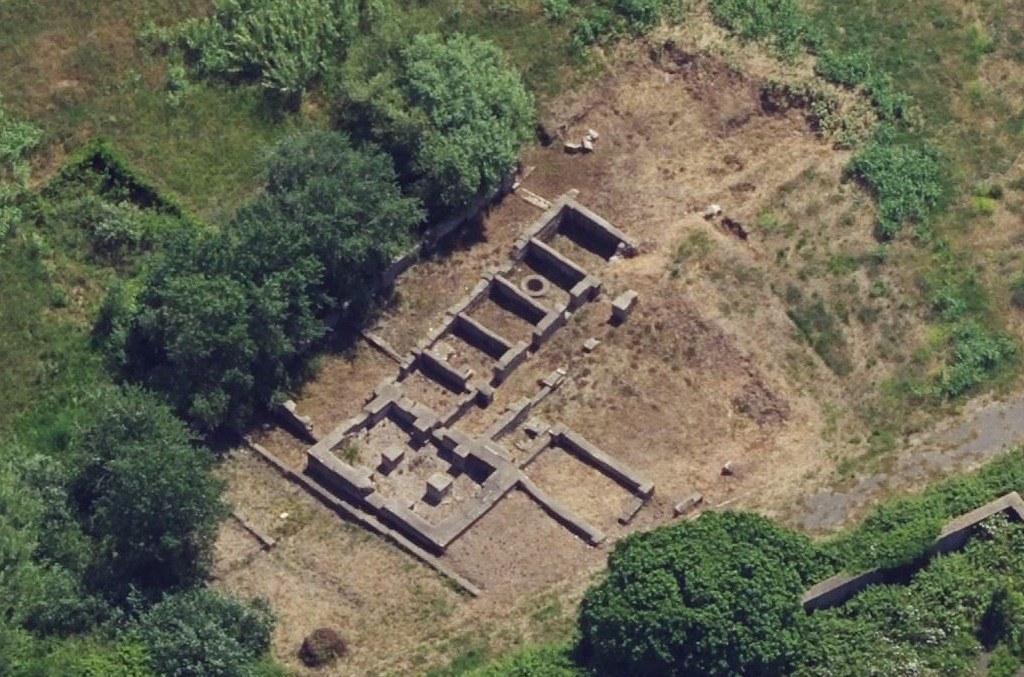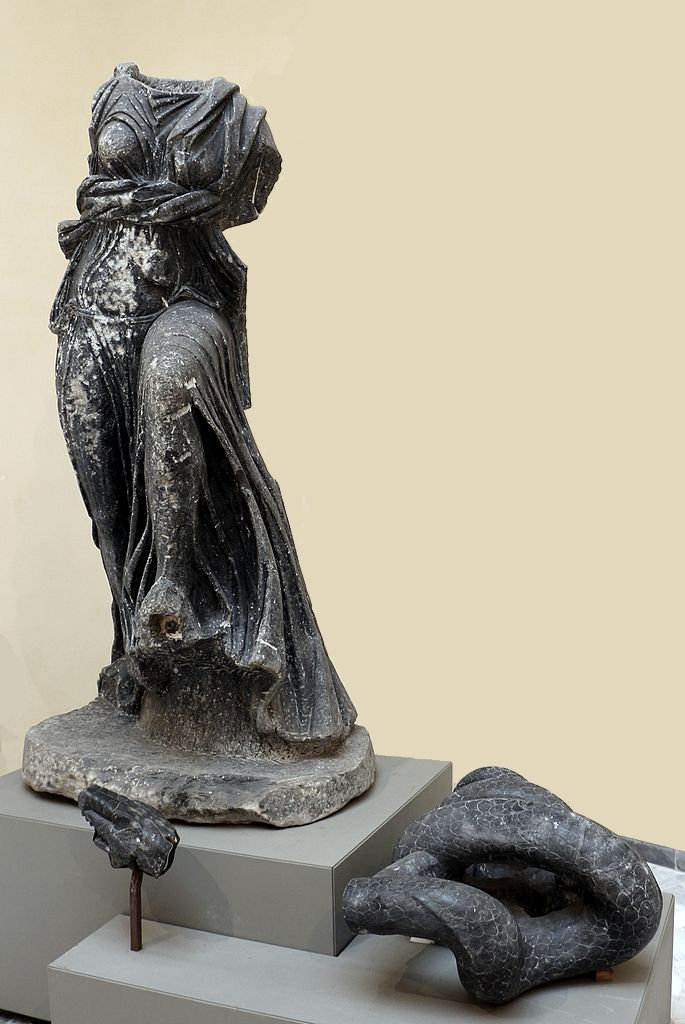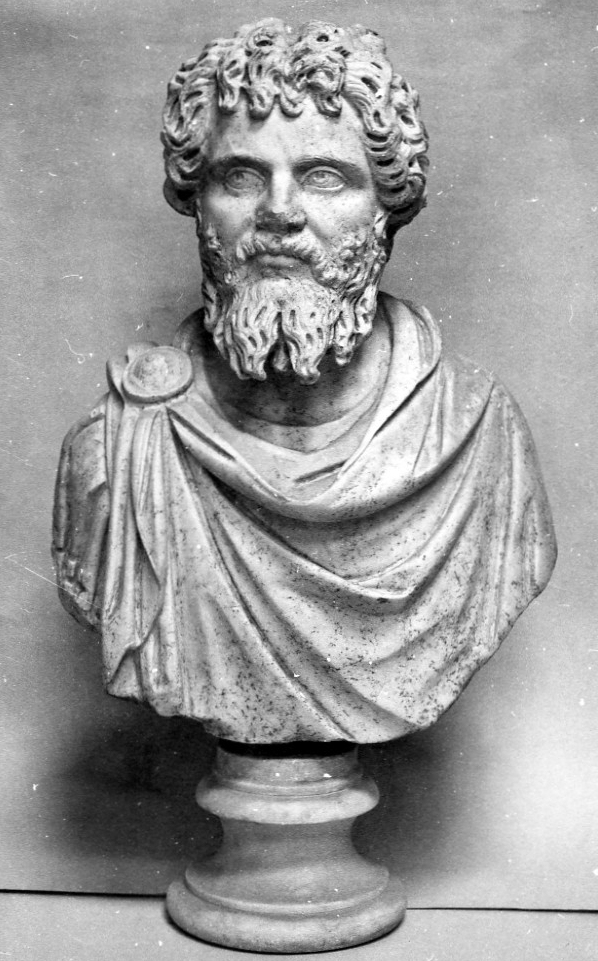Isola Sacra - North-west part - Temple of Isis and cistern
In 1959, during dredging in the part of the Fossa Traiana near the ancient beach, a marble architrave was found belonging to a temple of Isis. An inscription on the architrave informs us that the temple was restored as late as the years 375-378 AD by the Emperors Valens, Gratianus and Valentinianus:
|
DDD(omini) NNN(ostri) VALENS GRATIANVS ET VALENTINIA[nus Auggg(usti)] AEDEM AC PORTICV[m] DEAE ISIDI RESTITVI PRAECEPERUNT CVRANTE SEMPRONIO FAVSTO V(iro) C(larissimo) PRAEFECTO ANNONAE |
Our three lords Valens, Gratianus and Valentinianus, Augusti, decided to restore the temple and the porticus for the goddess Isis, supervised by Sempronius Faustus, most illustrious man, Prefect of the Annona. |
| Marble architrave. W. 5.17, h. 0.55, d. 0.55. Museo Nazionale Romano. EDR074782. | |
It might be this temple that is mentioned in two other inscriptions from Portus, from the late second century or the first half of the third century. Both were found in 1868, but the exact place of discovery is not known. One records a restoration by a priest of Isis and the Isiaci, the other mentions an enlargement by two women. Both inscriptions mention some sort of (underground?) hall, a megaron.
|
[Pr]O SALVTE IMP(eratoris) CAES(aris) [---] P(ii) F(elicis) A VG(usti) CAMVRENIVS VERV(s) SAC(erdos) DEAE ISIDIS CAP(itolinae) CED ET CETERI [Isi]ACI MAGAR(um) DE SVO RESTITV(erunt) |
For the well-being of Emperor Caesar, [---] pious, happy, Augustus, Camurenius Verus, priest of the goddess Isis Capitolina CED (?) and the other Isiaci restored the megarum at their expense. |
| Disappered. EDR147058. | |
|
VOTO SUCCE[pto] CALVENTIA SEVERINA ET AVRELIA SEVERA NEPOS MEGARVM AMPLIAVERVNT |
After making a vow, Calventia Severina and Aurelia Severa, her granddaughter, the megarum enlarged. |
| Disappeared. EDR147060. | |
The temple documented by the inscription from the late fourth century may well have been situated on the north-west corner of the Isola Sacra. Here remains were found of what has been called the Temple of Isis, protective deity of shipping, and of a building used by a related organisation. Excavations were carried out in 1969 and in three short campaigns between 1974 and 1989.
The site is very close to the ancient beach and to the Fossa Traiana (immediately to the west of the modern highway crossing the Fossa, Via dell'Aeroporto di Fiumicino, SS296). The oldest walls were built in the second century. There are restorations from the second half of the fourth century (opus vittatum). On the north-east side baths were found. On the south-west side are rooms surrounding a trapezoidal courtyard with a porticus. To the north is a huge cistern with two big, internal piers. Amongst the rooms is a large rectangular hall with piers set against the long walls, supporting the ceiling. In the short back wall are four semicircular and rectangular niches for small statues. The room was entered through a monumental porch flanked by two columns. A small room on a corner of the courtyard has a small apse in the back wall, inside which is a brick podium that could have supported a statue of Isis (see below). There is furthermore a latrine with several seats. The rooms may have formed part of the seat of an association related to the cult of Isis, and her temple may have been nearby.

Plan of the complex. Lauro 1993, 171 fig. 6.

The structures as seen on Bing Maps. North is to the left.
In the rooms a statue was found of a female deity, Isis Pelagia or Pharia (linked to the Mediterranean Sea or the lighthouse of Alexandria), together with a bearded snake. The statue is made of dark marble called bigio dorato in Italian, a marble that was often used for statues of Egyptian deities. The head, arms and feet are missing. They were probably made of white marble. The goddess is depicted in strong forward movement. She may have been standing on the prow of a ship with her left leg. The statue has been dated to the second half of the second century AD. Other finds were a herm of alabaster, and a portrait of Septimius Severus with the headdress of Serapis.

The statue of Isis with a snake. H. 2.09.
Museum Ostia, inv. nr. 18141. Photo: Wikimedia, Sailko.

The portrait of Septimius Severus. H. 0.66, h. of the head 0.25.
Museum Ostia, inv. nr. 18143. Photo: CGBC 1200064508.
A passage in the Satires of Juvenalis contains an indirect reference to a temple of Isis. Juvenalis mentions the lighthouse, the tremendous size of the harbour basin, and sailors arriving "there" and shaving their head. The shaving has been interpreted as a vow, a promise made in the face of imminent shipwreck. Michele Ronnick argues that "there" is a reference to a temple of Isis, because by shaving their head the sailors act like followers of Isis.
| Tandem intrat positas inclusa per aequora moles Tyrrhenamque pharon porrectaque bracchia rursum quae pelago occurrunt medio longeque relinquunt Italiam (non sic igitur mirabere portus quos natura dedit; sed trunca puppe magister interiora petit Baianae pervia cumbae tuti stagna sinus, gaudent ibi vertice raso garrula securi narrare pericula nautae. | And now at length the ship comes within the moles built out to enclose the sea. She passes the Tyrrhenian lighthouse, and those arms which stretch out and meet again in mid-Ocean, leaving Italy far behind - a port more wondrous far than those of Nature's making. Then the skipper, with his crippled ship, makes for the still waters of the inner basin in which any Baian shallop may ride in safety. There the sailors shave their heads and delight, in garrulous ease, to tell the story of their perils. |
| Juvenalis, Satires 12, 75-82. | |